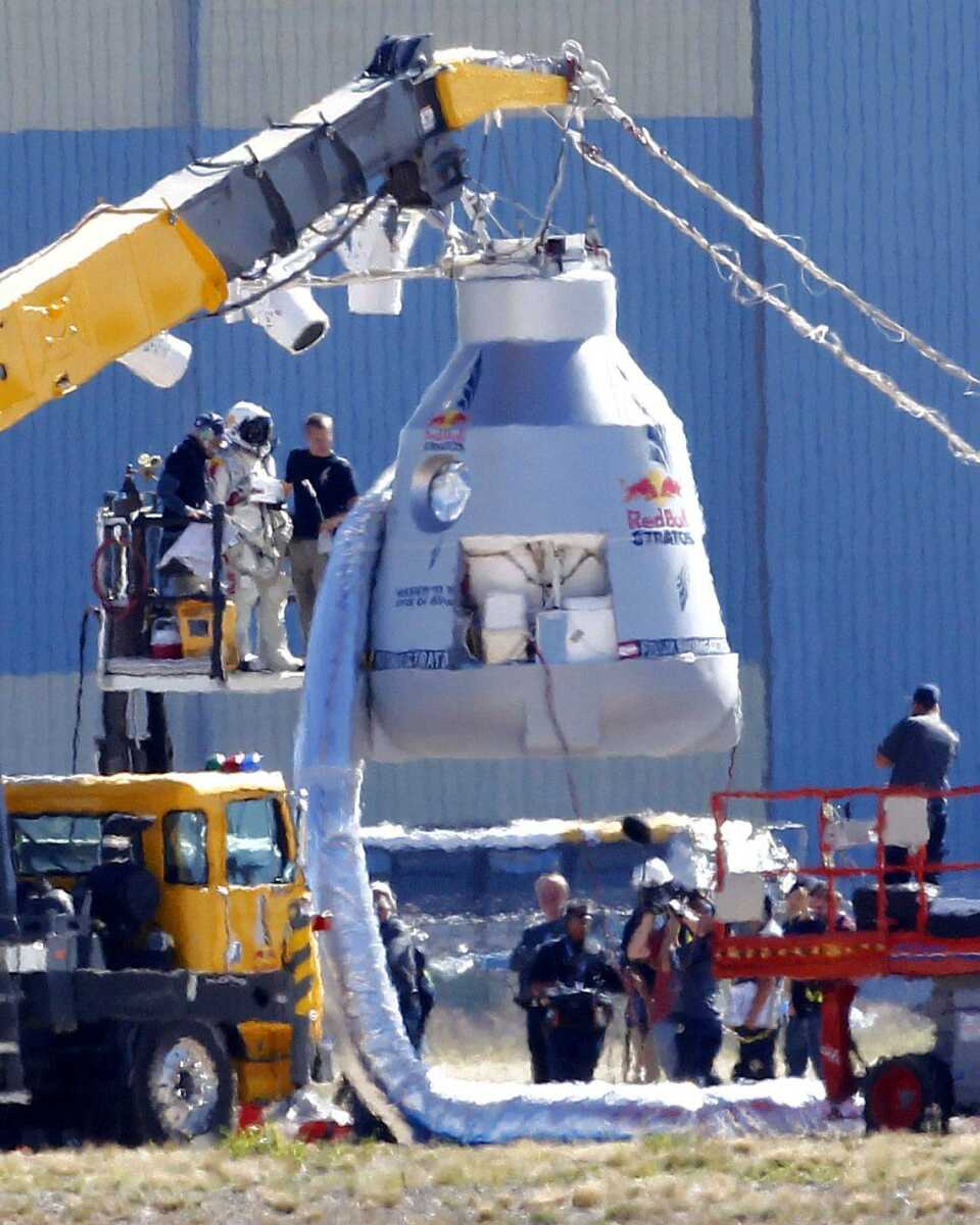Sky diver postpones his second attempt at supersonic jump
ROSWELL, N.M. -- Blame it on the wind. Again. For the second day in a row, extreme athlete Felix Baumgartner aborted his planned 23-mile free fall because of the weather, postponing his quest to become the world's first supersonic sky diver until at least Thursday...
ROSWELL, N.M. -- Blame it on the wind. Again.
For the second day in a row, extreme athlete Felix Baumgartner aborted his planned 23-mile free fall because of the weather, postponing his quest to become the world's first supersonic sky diver until at least Thursday.
As he sat Tuesday morning in the pressurized capsule waiting for a 55-story, ultrathin helium balloon to fill and carry him into the stratosphere, a 25 mph gust rushed across a field near the airport in Roswell, N.M.
Wind rushed so fast that it spun the still-inflating balloon as if it was a giant plastic grocery bag, raising concerns about whether it was damaged from the jostling.
The balloon is so delicate that it can only take off if winds are 2 mph or below on the ground.
"Not knowing if the winds would continue or not, we made the decision to pull the plug," mission technical director Art Thompson said. Baumgartner's team said he has a second balloon.
Thompson said the earliest the team could take another shot would be Thursday because of weather and the need to allow the crew to rest.
The cancellation came a day after organizers postponed the launch because of high winds. They had scheduled the launch for 6:30 a.m. Tuesday.
When winds died down, Baumgartner, 43, suited up and entered the capsule. Crews began filling the balloon. A live online video feed showed a crane holding the silver capsule off the ground.
The team's discovery that it had lost one of two radios in the capsule and a problem with the capsule itself delayed the decision to begin filling the balloon, pushing the mission close to a noon cutoff for launch.
"It was just a situation where it took too long," mission meteorologist Don Day said.
After sitting fully suited up in his capsule for nearly 45 minutes, Baumgartner exited the capsule and departed the launch site without speaking to reporters.
The plan was for Baumgartner to make a nearly three-hour ascent to 120,000 feet, then take a bunny-style hop from the capsule into a near-vacuum where there is barely any oxygen to start his jump.
Any contact with the capsule upon exit could tear the pressurized suit. A rip could expose him to a lack of oxygen and temperatures as low as 70 degrees below zero. It could cause potentially lethal bubbles to form in his bodily fluids -- a condition known as "boiling blood."
While Baumgartner hopes to set four new world records with his jump, his free fall could provide scientists with valuable information for next-generation spacesuits and techniques that could help astronauts survive accidents.
Currently, spacesuits are certified to protect astronauts to 100,000 feet, the level former Air Force Capt. Joe Kittinger reached in his 1960 free-fall record from 19.5 miles.
Kittinger's speed of 614 mph was just shy of breaking the sound barrier at that altitude.
Baumgartner has said he expects to hit 690 mph.
Connect with the Southeast Missourian Newsroom:
For corrections to this story or other insights for the editor, click here. To submit a letter to the editor, click here. To learn about the Southeast Missourian’s AI Policy, click here.








